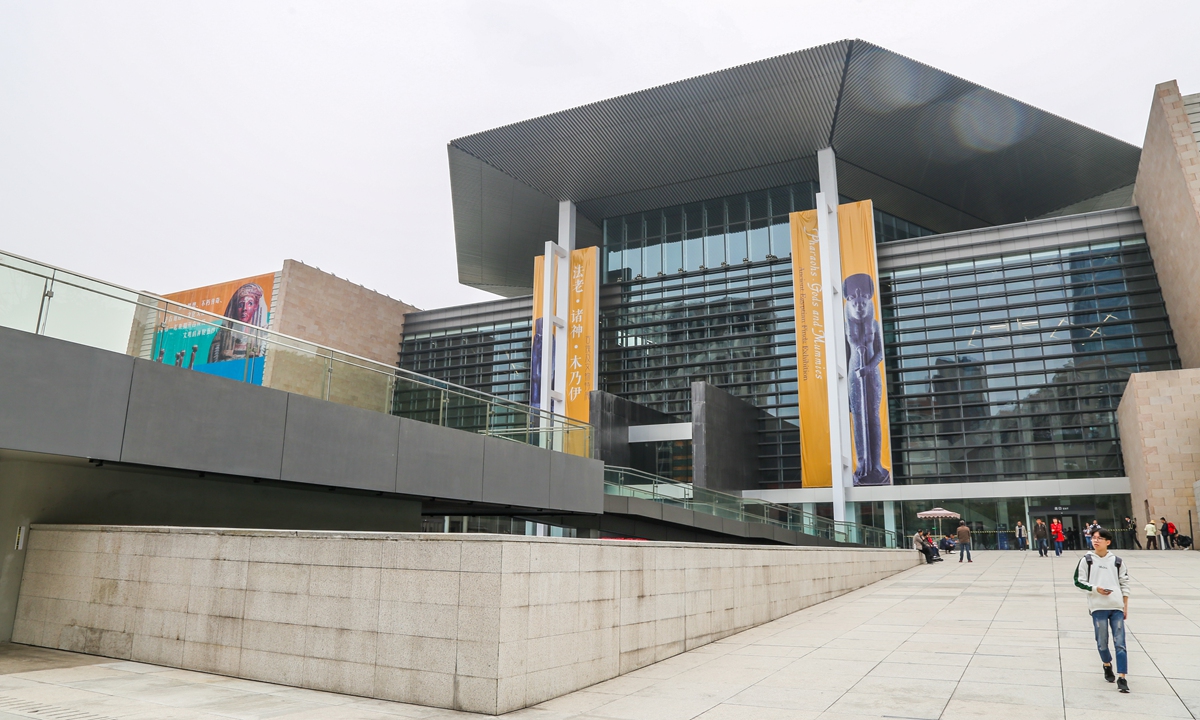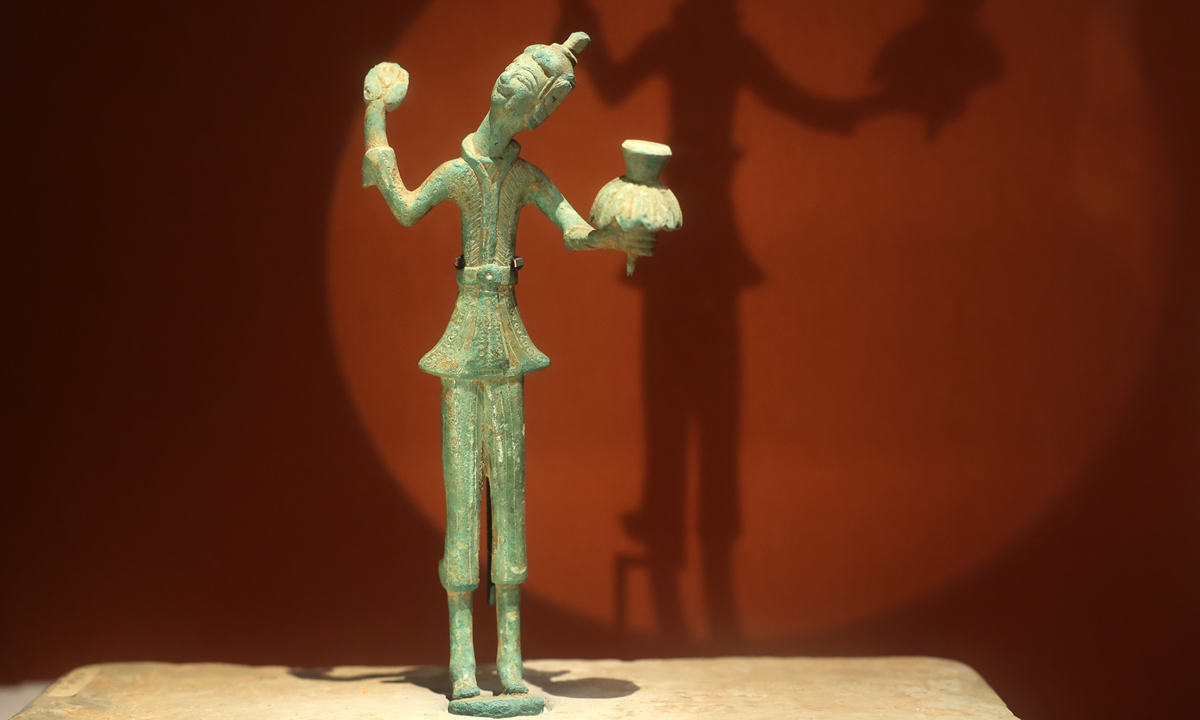
Susha Danyi at the Hunan Museum Photo: VCG
Editor's Note:
Through the continuous efforts of several generations of Chinese scholars, major research projects, such as the Project to Trace the Origins of Chinese Civilization, have shown that Chinese history includes 1 million years of human evolution, 10,000 years of culture and more than 5,000 years of civilization.
Thousands of museums across the country, with their rich collections and exhibits, are like stars lighting up the Milky Way that is China's history.
In this series, the Global Times will introduce 10 museums from across the breadth and width of China, exploring their contributions to the country's diverse, inclusive and continuous civilization.
This sixth installment of the series brings readers to the Hunan Museum in Central China's Hunan Province.
Located in Changsha, Central China's Hunan Province, the Hunan Museum is home to more than 180,000 cultural relics, most of which were found at a local historical treasure house - the 2,000-year-old Mawangdui Tombs, one of China's most significant archaeological discoveries of the 20th century.
Rich in silk textiles in particular, Susha Danyi, or Plain Unlined Gauze Gown, is the crown of the museum's collection.
The piece is only one of the many star relics in the museum that reveal the "breathtaking Chinese ingenuity" seen in silk products, which later helped "extend China-West exchanges" along the ancient Silk Road, Zhang Yiwu, a professor of Chinese language and literature at Peking University, told the Global Times.
Light but costly Acting as a virtual guide for the Global Times, Hunan cultural relic expert Wang Yueming said that the Mawangdui Tombs are so important that the museum has a permanent exhibition dedicated to them. The site was a burial place of the Western Han Dynasty (206BC-AD25) high official Li Cang and his wife Xin Zhui, known as the Marquis and Marquise of Dai.
Wang said that relics such as Western Han Dynasty silk textiles and finely painted lacquerwares are "features" of the institution.
"The more delicate and fine a cultural relic is, the more ancient Chinese ingenuity is reflected in it. Those items are therefore light in weight but 'weighty' in value."
Weighing only 49 grams, the museum's star item, the Plain Unlined Gauze Gown, is part of the permanent exhibition. The gown was made from natural mulberry silk that is so fine it can be folded and placed inside a matchbox half the size of an adult's palm. Discovered at the Mawangdui No.1 Tomb, it is the thinnest and lightest piece of early human clothing in the world.
Due to the material's extremely fragile nature and weathered condition when it was first discovered in 1972, the current piece on display is actually a 1:1 replica of the original that took experts more than 50 years to figure out how to make.
The original gown was this light because ancient Han people figured out that adjusting the silkworms' resting timetable could cause them to produce thinner silk, Jian Mingwei, the head of the relic's reproduction organization, the Nanjing Yunjin Brocade Research Institute, revealed to the Global Times.
Fang Junyi, an ancient Chinese fashion researcher, told the Global Times that although the piece was transparent and lacked decorations, it epitomizes the advanced "textile engineering techniques" of ancient China.
"It is almost unbelievable that silks that thin could be weaved into a garment, especially by hand," Fang noted, to adding that the seemingly plain gown has understated brocade patterns adorning its collar and cuffs.
Along with the silk gown, the museum is home to other textile items like the Printed and Painted Floss Silk Padded Gauze Robe, also from the Western Han. Also made of silk, the robe is multi-colored, showing the maturity of the Western Han Dynasty's silk industry.
This shows that China truly has earned the title of The Country of Silk, cultural researcher Xu Shuming, told the Global Times.
He emphasized that the Western Han's "peak Chinese silk culture" indeed made silk a "blockbuster item" that helped ancient China establish exchanges with the West.
"Although Mawangdui culture was few decades earlier than diplomat Zhang Qian's westward journey, Chinese silk civilization made China the main hub of the ancient Silk Road," Xu noted.

The Hunan Museum Photos: VCG
'Unified and diverse China' Besides textiles, the Hunan Museum also has bamboo and wooden slips and "silk books" such as a copy of the Tao Te Ching written on silk.
The artifact was discovered in 1973 in the Mawangdui Tombs. The work is notable in that the Te chapter comes before the Tao chapter, making it the "Te Tao Ching," while in later versions of the book that are commonly used today this order is reversed.
Along with the artifacts, the museum is home to other ancient texts covering subjects such as ancient astronomy, astrology, geography and medicine, such as the
Recipes for Fifty-two Ailments, China's earliest and most complete ancient book of medical prescriptions.
Zhang told the Global Times that the museum's texts depict the Han Dynasty's "high degree of cultural civilization."
He noted that China's Han Dynasty shows that a "unified China" had long been formed with a well-established political system and stable social order that drove cultural development forward.

A bronze dancing figurine at the Hunan Museum Photo: VCG
"Including the museum's star relics, the entire Mawangdui Tombs are valuable as they allow us to deduce the history of the Chinese nation," Zhang noted.
Zhang emphasized that Chinese civilization was "historically unified yet diverse."
Located in the Central Chinese hinterland, the museum officially changed its name from the Hunan Provincial Museum to the Hunan Museum in 2022 to show it had been upgraded to a national-level public institution.
Duan Xiaoming, the director of the Hunan Museum, said that the name change defines its transition from an exhibition museum to a research museum.
He revealed that from 2022 to 2024, the museum is carrying out a series of activities focused on the Mawangdui Tombs.
These events will be held both at home and abroad through collaboration with overseas research institutions.
Currently, the Hunan Museum has partnered with the Chinese Art Media Lab of Harvard University to further promote Mawangdui culture from an international perspective.